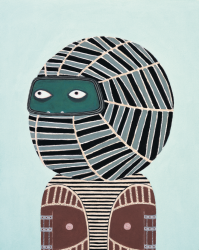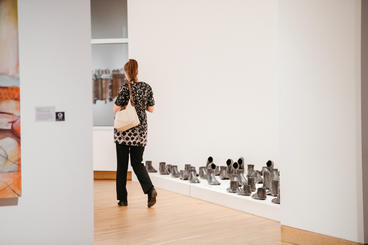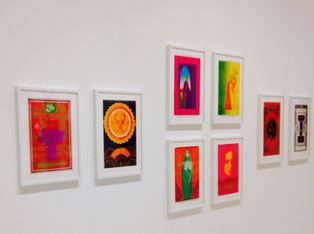
FEATURED ESSAY
Peace, love and freedom. That is how I identify the 1960s and 1970s. As a daughter of two baby boomers, I have heard plenty of stories of life lived in a generation full of social movements, bright colors, substances, and bell bottoms. It was a counterculture that gave birth to hippies.
I spent my Sunday at the Walker Art Center with my parents exploring the new Hippie Modernism: The Struggle for Utopia exhibit. It is comprised of four galleries displaying the art, architecture, and design of the counterculture of the mid-1960s to the mid-1970s.
From cat eye make-up to the sound of classic rock echoing through the crowds at Woodstock, the sixties and the seventies are some of my favorite eras. I was excited to see how this fascinating time and culture would be represented in artistic form.
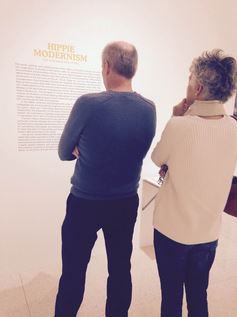
What I found were two curious adults fascinated by artworks creating a rush of nostalgia for their teenage years. I felt like the third party on this trip to the Walker, watching two baby boomers reminisce on a time of peace, love and freedom.
Dad has been an artist ever since I can remember, so it’s no surprise that he was mesmerized by the collection of pencil drawings channeling psychedelic surrealism. From his artist’s perspective, he considered this art to be sensory. The sight of the psychedelic prints reminded him of the fluorescent posters, black light, and orange fish nets he had gracing the walls of his teenage bedroom. The citrus trees reminded him of the incense from Spencer’s that he burned while drawing in his room. These things created an intimate space for his creativity and the ability to be who he wanted to be.
Mom found a part of her identity in this exhibit through an emotional lens. She remembered a fashionable 1970s outfit consisted of a smock paired with bell bottoms. She recalled the brown shag carpet that replaced the beautiful hardwood floors in her parents 1950s rambler, which, today would be unheard of. Many of the pieces on display portrayed the effects of an artist on LSD; colorful, psychedelic and loud. She softly told me that she was a rule-follower who knew much of the hippie movement wasn’t something she wanted to partake in. The media coined the phrase ‘hippie’ as someone with no direction. Back then, she was a productive young woman who knew the direction she wanted to go in life. As an adult looking back at her childhood, she believes that this movement didn’t affect her negatively because she chose not to partake in the mind-altering experimentation of the time. Instead, she worked the smock and bell bottoms on a regular basis while jamming to Fleetwood Mac in her shag carpeted rambler.
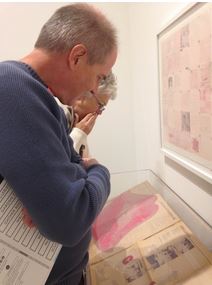
I had the privilege of accompanying a couple of baby boomers as they looked back to their youth with fondness. Peace, love and freedom are delicately woven into the fabric of their identity; hippie modernism is part of their history.
Layna Mestad
Layna Mestad I’m a senior majoring in Strategic Communications with a focus on Art History and Museum Studies. I’m Minnesota born and raised and am a lover of the north shore and antique shops. I love to find a quiet corner amidst the hustle and bustle of the Twin Cities to curl up and read a book, most likely about the happenings of the sixties. Art and history make me intrigued in the world that surrounds me. I will forever be a student to that fascinating combination. I am so excited to be a part of WAM and promote this museum to the university community and beyond.

